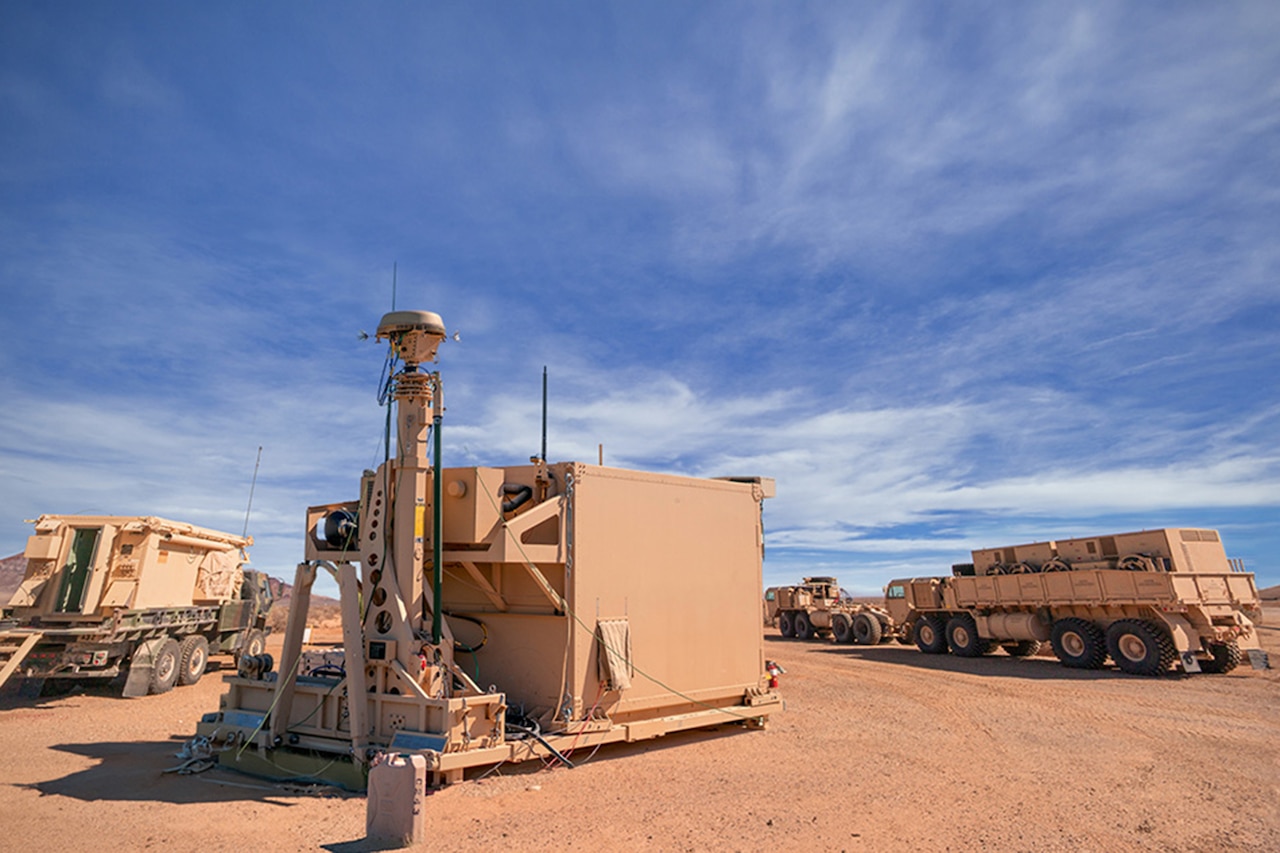As one of the key signature efforts supporting the Army’s Air and Missile Defense community, Army Integrated Air and Missile Defense is the cornerstone of AMD modernization within the U.S. Army. The Integrated Battle Command System is the materiel solution for the AIAMD enterprise that integrates sensors and effectors onto the Integrated Fire Control Network and compounds overall AMD effectiveness by dramatically enhancing the ability to identify, track, engage, and defend against diverse threats.
As part of Project Convergence Capstone 4, taking place in February and March at locations along the West Coast, the Air and Missile Defense Cross-Functional Team is participating in experimentation meant to transform how the joint forces fight in the future.
This is the greatest and most complex modernization of our AMD capability since the Cold War, centered on connecting sensors, shooters and a common mission command system.”
Col. Bill Parker, Army Futures Command
According to Chris Wehmeier, AMD CFT, “Project Convergence is the ideal environment to experiment with and grow AMD capabilities in the years to come.” Wehmeier said that this is the third experimentation capstone event IBCS has participated in. “PC 21 saw IBCS expand into the realm of joint interoperability. By linking our IFCN with our joint partners’ composite tracking networks, we learned that technology is catching up to the concept, creating an expansive, effective, and robust air defense capability that leverages the best of all services.”
In PC 22, the experiment design expanded the distances between sensors and shooters to extend the battlespace, added additional nodes to the network to increase the load, and used tactical communications systems rather than commercial systems to provide greater realism. PC-C4 will continue to expand the scope and scale of the network to produce data that can be used to inform future experiments and future acquisition and development decisions.
AIAMD combines current and future AMD sensors and weapons into a common integrated fire control capability that fully allows the warfighter to integrate AMD capabilities across all echelons. AIAMD replaces multiple disparate command and control systems, enabling better-coordinated engagements, positive control of sensors and weapons, friendly protection, and shared situational understanding.
AIAMD enhances battlefield awareness, improving command and control and integrating systems to produce desired effects. The system’s improved awareness and performance combine to provide soldiers and formations that are more lethal and survivable.
“This is the greatest and most complex modernization of our AMD capability since the Cold War, centered on connecting sensors, shooters and a common mission command system,” said Col. Bill Parker, director of the Army Futures Command’s AMD Cross Functional Team. “Ultimately, it is about giving our warfighters capabilities sooner and increasing the options available to keep pace with our adversaries, making their challenges more complex.”
IBCS is envisioned as the direct replacement for the mission command nodes for the Patriot weapon system, the Terminal High Altitude Area Defense weapon system, Army Air and Missile Defense Command Headquarters, Air Defense Artillery Brigade Headquarters and Air Defense Airspace Management cells. It enables rapid convergence of sensors, shooters, and mission command components on an IFCN.
Integration efforts of legacy and developmental sensors and shooters will provide the force with capabilities to defeat emerging threats in various scenarios. These capabilities allow the force commander to form operational air defense task forces tailored to a specific mission profile and to integrate with joint and multinational partners.
IBCS achieved Initial Operational Capability and was approved for Full-Rate Production in early 2023.
“Achieving IOC for AIAMD and IBCS was a team effort and represented both an accomplishment of monumental magnitude for the Army and a first critical achievement in transforming Army integrated AMD forces to support joint and multinational forces in future operations,” according to Parker. “It is the cornerstone of integrated AMD capabilities as we build the Army of 2030, and it lays the foundation for designing integrated AMD forces for the Army of 2040.”
Once fully fielded, IBCS will allow AMD forces to be tailored and scaled appropriately to meet the threat. The quantity and mix of capabilities can be dynamically re-tasked into a formation with an inherent, integrated mission command system to build tiered and layered defenses.
The program will field common mission command nodes for Army AMD forces to defend against various threats using surveillance and fire control capabilities across Army, multiservice, and Multinational AMD capabilities throughout all echelons.
“Going forward, the AMD Cross-Functional Team, teaming with our military and industry partners, continues to build momentum for AIAMD through testing as part of the Integrated Fires Test Campaign in 2024 and beyond,” Parker noted. “AIAMD and IBCS is more than just a mission command node; it is an integral component of AMD weapon systems. It remains our top AMD priority and is an essential part of not only delivering the Army of 2030 but designing the Army of 2040.”





















Discussion about this post